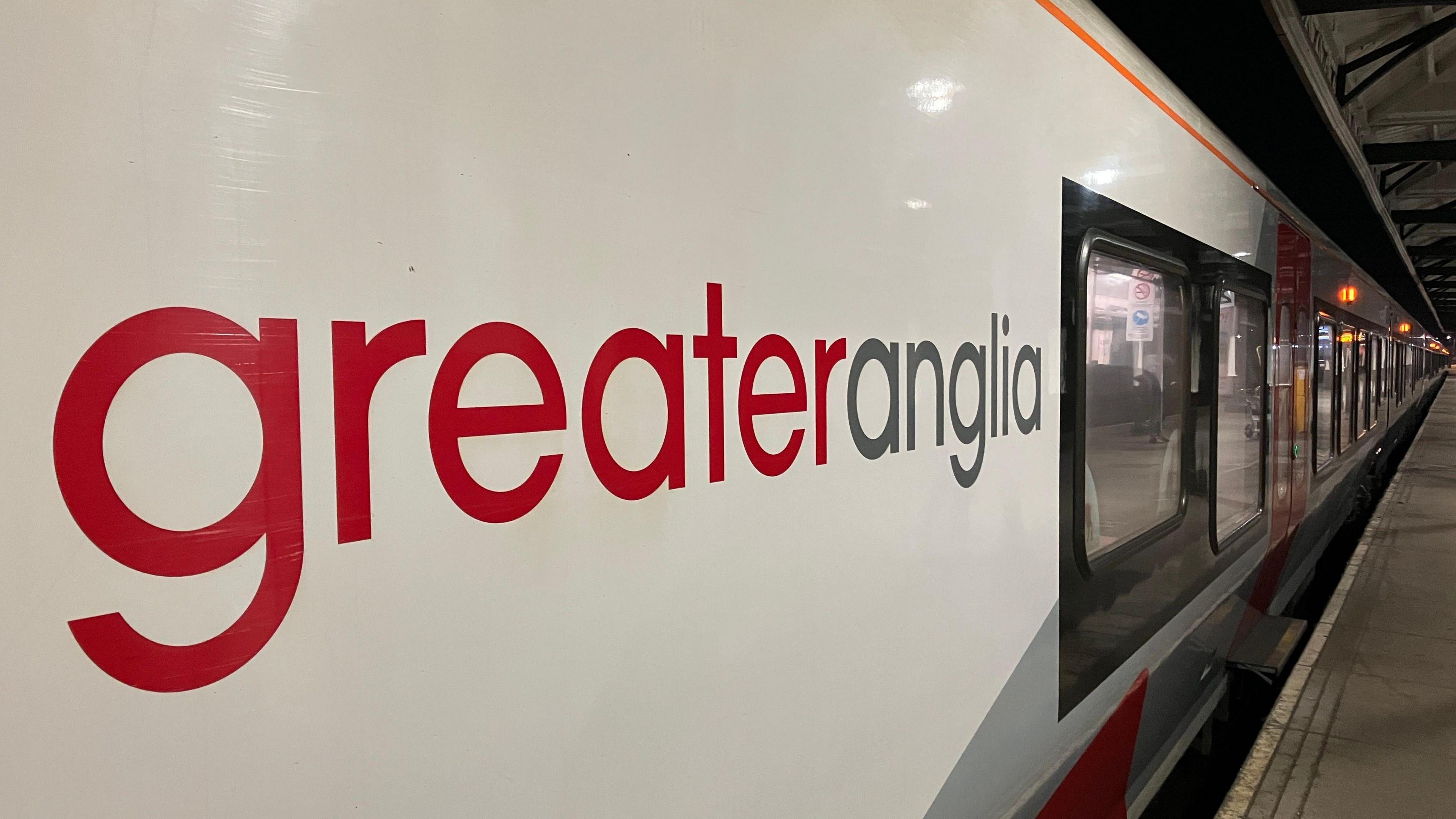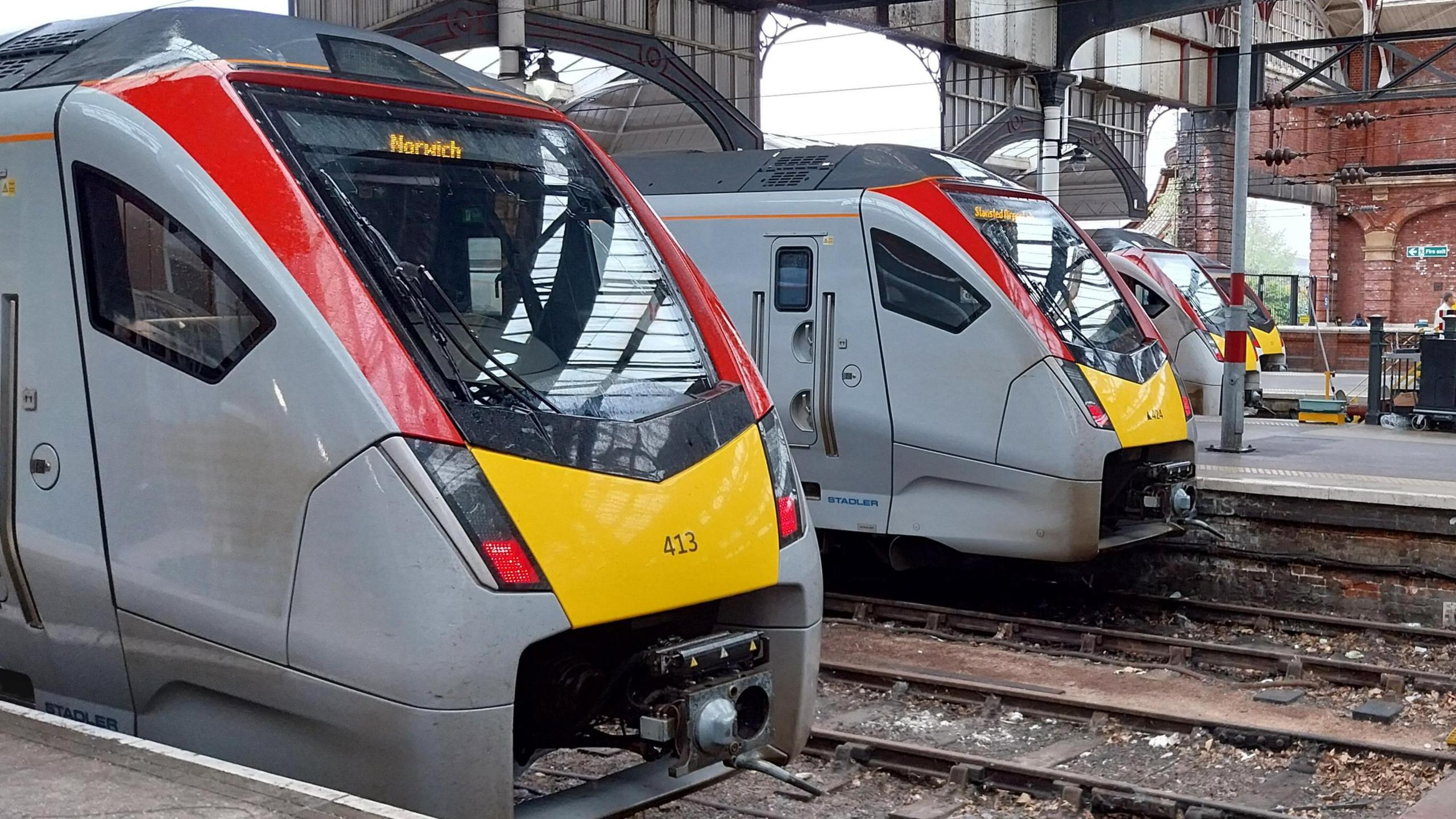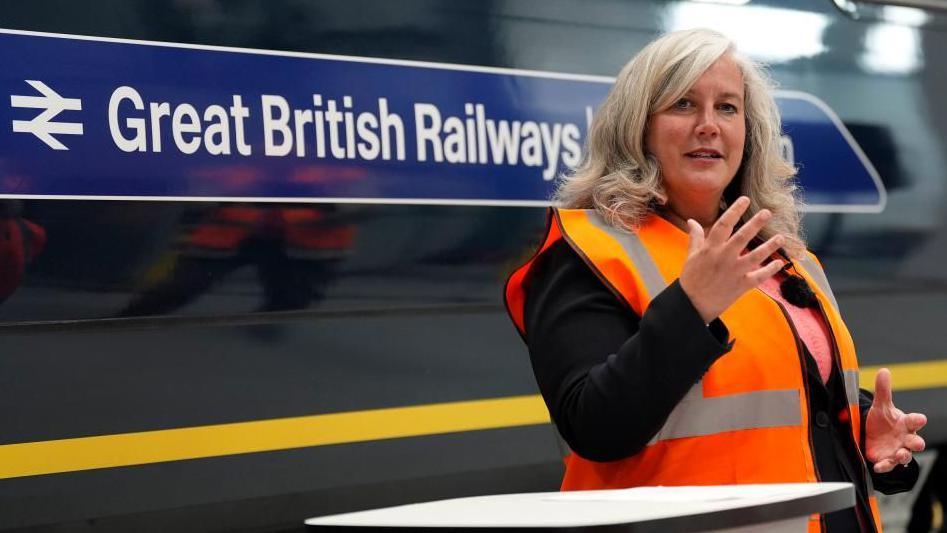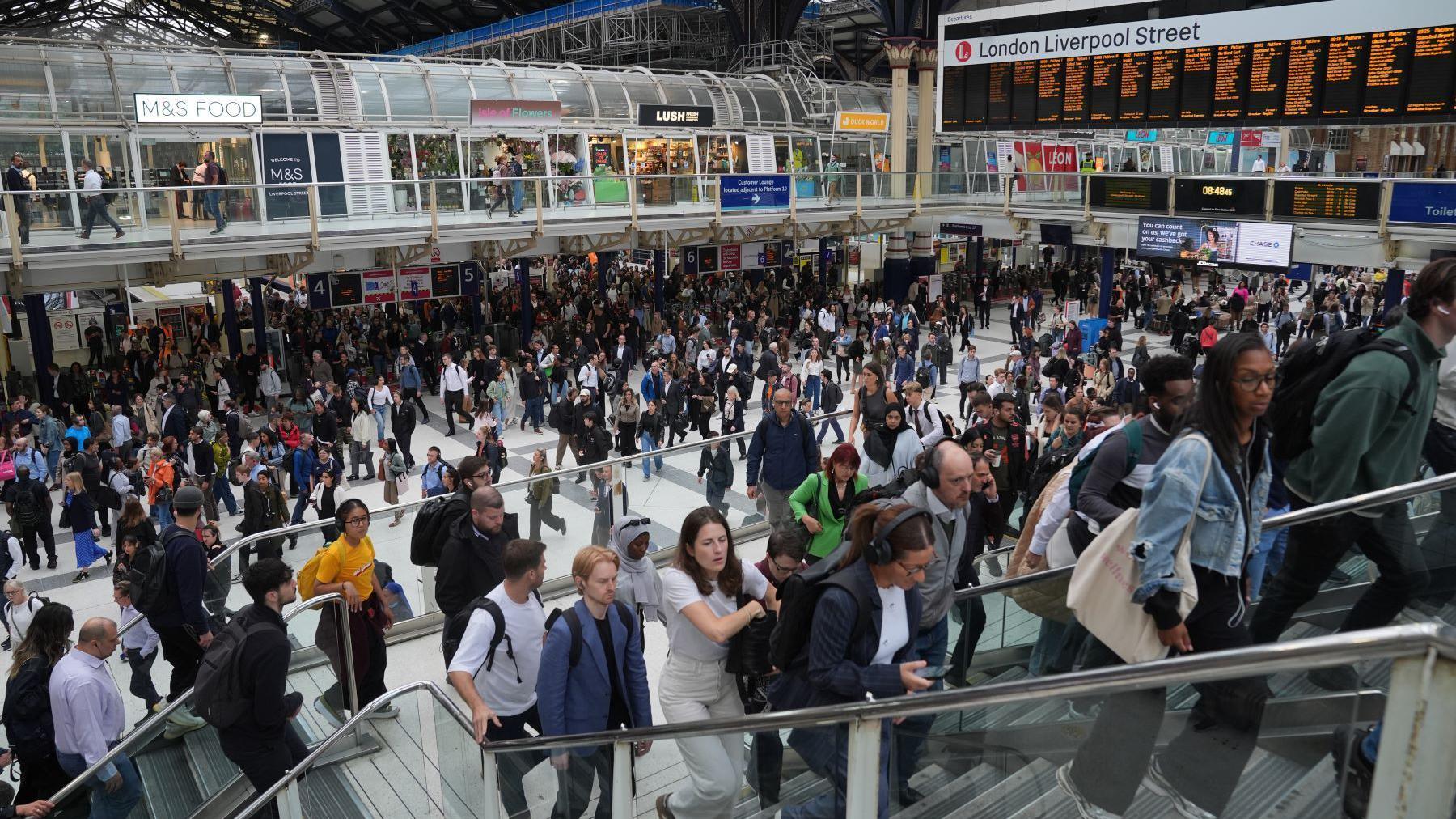Q&A: What will Greater Anglia's nationalisation mean?

Greater Anglia runs trains across the East of England
- Published
Greater Anglia, which runs trains across the East of England, will become the latest operator to be nationalised on 12 October.
But what difference might it mean for passengers?
Who will be running the trains from Sunday?

Greater Anglia hoped passengers would not see immediate differences
The Greater Anglia brand will stay – for now. The government is working towards establishing Great British Railways (GBR), but that hasn't been created just yet.
All the current staff will stay in their roles too. They'll transfer into the publicly owned company.
There will be no changes to train services, timetables or station facilities, which Greater Anglia has, external said, external will be "unaffected by the transition".
So, what is changing?

Transport Secretary Heidi Alexander has said she "would love to be able" to promise cheaper fares
Behind the scenes, a company wholly owned by the Department for Transport (DfT) will be running the trains.
DfT Operator Ltd is the government's public sector rail operator.
The government says, external its purpose is "to bring all currently privately-owned train operators into public ownership" before the creation of GBR in 2027.
It already runs 6,500 services each weekday through six companies, including London North Eastern Railway (LNER) on the east coast mainline and c2c, which operates in south Essex and east London.
Including Greater Anglia will mean seven out of 14 rail operators that will make up GBR will be in public ownership.
But is Greater Anglia not one of the best performing operators?
Earlier in October, it was named Rail Operator of the Year at the National Transport Awards.
The company, which handled 81.8 million passenger journeys in 2024-25, says it has been "the most punctual operator in the UK" since April 2023.
The company also points out it won three Golden Whistle awards earlier this year for its "high standards of punctuality and reliability".
Jonathan Denby, its head of corporate affairs, said one of its "big objectives" was to "make sure that it stays exactly the same".
Why is it being nationalised now?
Labour committed to nationalising all train operators in its manifesto ahead of the General Election in 2024.
According to a briefing, external by the House of Commons Library, Greater Anglia's contract with the DfT has almost another year to run, but because its "core term" ran out in September 2024, the contract can be cancelled with an "expiry notice" giving three months warning.
A transport minister previously said the government was choosing to nationalise services as operators' contracts expire or reach break clauses "to avoid the need to pay a penny in compensation" to rail firms for "earlier termination".
Rail Partners, which represents private sector train operators, has said nationalisation was a "political rather than a practical solution which will increase costs over time".
What could it mean in the future?

Greater Anglia runs trains out of London Liverpool Street
The government says nationalisation means trains will be operated "in the interests of passengers, not shareholders".
Though, lower fares aren't being promised.
Transport Secretary Heidi Alexander said that the government would "move heaven and earth" to deliver "value for money on the railways".
She said "in the longer term" she "would like to be able to deliver a more affordable railway" but needed to strike a balance between what taxpayers put into services and how much passengers pay, while also providing "a high quality service".
We're told that Greater Anglia's management will begin working more closely with Network Rail's local leaders, who are responsible for tracks, signals and other infrastructure across Britain.
'Value for money' vow after rail nationalisation
- Published10 October
What can Greater Anglia passengers expect from nationalisation?
- Published6 October
Greater Anglia gearing up for state ownership
- Published5 October
The new man in charge will be Jamie Burles, who has been named integrated managing director for the Anglia region.
The DfT said his job will be "to increase collaboration, accountability and oversee improvements".
Creating a "unified railway" will end "decades of fragmentation", the department has said.
It has also said that nationalising all the currently franchised services should save an estimated £150m a year in fees, which would otherwise have been paid to rail operators.
Will it mean more strikes?
Kathy Mazur, a regional organiser with the RMT union, told BBC Politics East taking the railways back into public ownership would not necessarily mean more strikes.
She said in the days of British Rail "we were on poverty pay, so we were doing a lot of strikes back then".
"All we want for our workers is a decent pay rise," she added.
"Our members do not want to go on strike – strike is always the last resort. So no, you're not going to see an increase in strikes."
Richard Clinnick, the editor of magazine Modern Railways, said "if the plans are stuck to" he "would struggle to see why the RMT would go for industrial action".
He added that "if things were to change", like terms and conditions, he "could see something – but it's far too early to predict what could happen.
"We need to see what the railway will look like post-2027."
Get in touch
Do you have a story suggestion for Suffolk?
Follow Suffolk news on BBC Sounds, Facebook, external, Instagram, external and X, external.